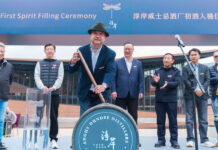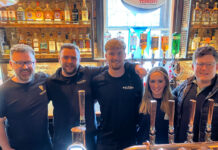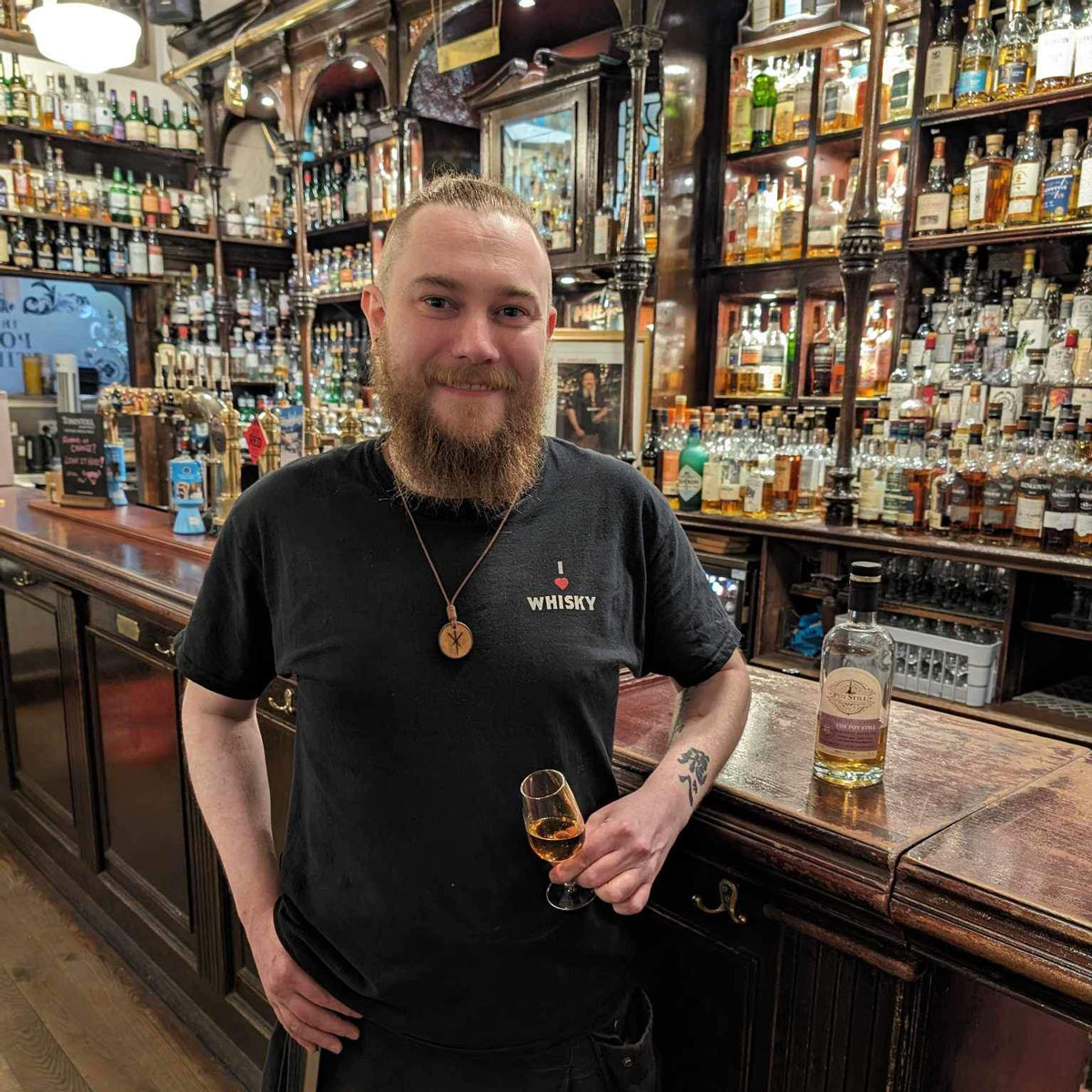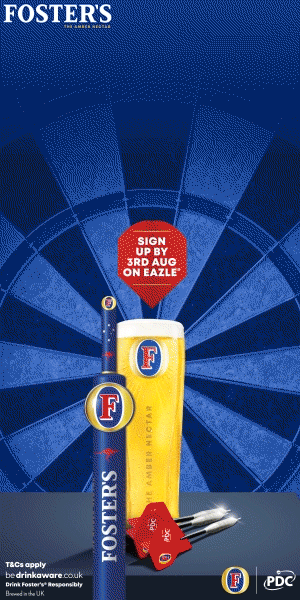
ViVAS and SLTN team up to ask the big wine questions

What’s the current state of play for wine in the Scottish on-trade?
SLTN has linked up with ViVAS, the drinks company delivered by wholesaler 3663 and sourced by Bibendum Wine, to get the lowdown on the big sales trends in wine, how the trade can make more from wine, and how knowledgeable consumers and operators are about the product.
Offering their insight for the first SLTN Wine Forum are representatives from ViVAS, two of its customers in Scotland and the education body the Wine & Spirit Education Trust.
From ViVAS we have Damien Jubert-Winn, category development manager, who is joined on the panel by customers Neil Douglas, proprietor of Cafe Antipasti on Glasgow’s Sauchiehall Street, and Tim Stone, owner of Aberdour’s Cedar Inn.
Completing the forum is Catherine Boot, business development manager for the WSET in Scotland. Here’s their take on the big wine issues facing the trade today.
What’s your top tip for boosting summer wine sales?
DJ-W: Consumers are generally habitual with an underlying desire to be challenged to try something different. It’s about tapping in to that desire and ensuring the delivery is faultless.
Merchandise the bar to showcase your wine offer, whether by simply taking out a bottle from each case and putting it on the back bar, setting up an ice bucket on the bar, using table talkers or wine lists on every table, or chalking some summer teaser specials on a board tempting consumers to try something different.
If they are tempted make sure your staff ensure the drink is presented perfectly every time. Small things like the glass and temperature are all crucial to the consumer experience.
ND: We currently have a selection of Prosecco cocktails on as cocktail of the month. This has proven to be very popular, even with the guys.
CB: Staff training of course! The more people know, the more they will sell. At the very least, arrange a staff tasting of the wines, ideally with some dishes from the menu if that is when most wine is consumed in your outlet.
What should a good summer wine list not be without?
DJ-W: Summer to me is about relaxing with friends, letting your hair down and feeling slightly freer, and no wine sums up these emotions more than something with a bit of fizz.
Be it Champagne, Prosecco or Cava, sparkling wines can be drunk at any time, not just for celebrating.
After all, summer in Scotland with sun is, for me, a cause for celebration!
ND: Rosé Prosecco has sold well this summer, though I personally love a well-chilled bottle of austere Chablis.
TS: For me it’s Pinot Grigio, Sauvignon Blanc, a good Rosé, and a good Shiraz as well. Because of our Mediterranean theme we have a Tempranillo and a Merlot at the moment.
CB: Affordable fizz by the glass.
Are rosé and Pinot Grigio still dominant, or are there challengers to the throne?
DJ-W: We are finding that, in the main, rosé and Pinot Grigio are going to be hard to knock off their perch. This is down to their ability to satisfy the middle ground, but there is an uprising of a few more cult or unusual varietals like Fiano, Gruner Veltliner and Picpoul de Pinet and in the red corner, Carmenere, as people search to forge their identity with different varietals.
ND: I think rosé will continue to increase in popularity as it remains excellent value.
Pinot Grigio may suffer as I understand that recent crops have been poor and prices have started to rise. Sales of Fiano have increased recently as they can provide better value.
TS: Pinot Grigio and rosé are still doing really well. They’re mostly liked by the ladies, especially in summer, though they’re popular in the winter as well. They go with everything – with food or just socialising. I’ve bought a Prosecco as well, which seems to be doing quite well at the moment.
CB: Probably, but there are lots of alternative refreshing whites – Albarino, Riesling, Fiano – which can add interest.
How should a summer wine list differ from a winter offer?
DJ-W: I think the old ‘comforting reds for winter and fresh zippy whites for summer’ rule is losing ground. This year we saw strong sales through the winter of white and particularly rosé wines, so my advice would be to change your wine list to suit your seasonal menu and ensure you have some synergy between the food and wine offer.
ND: A summer list should include lighter reds and a good selection of rosé.
TS: I don’t think there’s much more than that. The food is seasonal here, so it’s just really matching it up with that.
CB: Be led by changes in the menu, from rich, heavy sauce and meat-based dishes to lighter, fresher dishes.
How knowledgeable is the average Scots drinker about wine?
DJ-W: Multiple grocers offer an ever-growing and extensive wine category in their aisles, and this is only happening because the demand is there. Thanks to supermarket pricing strategies and promotions, the average Scots drinker is fast absorbing an extensive knowledge of what they like, and where it comes from.
ND: Certainly more knowledgeable than 15 years ago when I started in the trade. House wine sales used to account for 75% of all our wine sales. The split is more like 50/50 now as people look to experiment.
TS: We have one or two wine connoisseurs, but I think generally people stick to known brands. For instance we had a La Posada Torrontes from Argentina, and it just didn’t shift at all. Then for some reason it just took off. People have dipped their toes in the water. I had to push that one by letting people taste it and giving them a sample of it.
CB: ‘Keen to learn’ probably sums it up best.
Is wine still an intimidating subject?
What can suppliers and operators do to make it more fun and interesting?
DJ-W: For years the wine trade has shrouded our product in mystery and complexity. Yes there are confusing areas, but as operators we must make it as accessible as we can to the average consumer so they can build their own relationship with it. Training staff in ways they can relate is a great way to remove any intimidation, like tasting cut apples and pears with a wine that shares those tasting notes.
ND: No. I think the introduction of stelvin closures has removed a lot of the unnecessary ceremony of tasting for oxidisation. Good staff training is also important. Damien, our rep at ViVAS, has been excellent for this.
At Antipasti we encourage customers to try wines they are not familiar with by offering free samples of any of our range of wines by the glass before they make a decision.
TS: I think it is. It’s been simplified by the trade, and people now know the main grapes and the main wine making areas and know what they’re like, but it is a subject that I think people feel there’s quite a lot of snobbery in. We try to lay it out in plain English and make it as simple as possible.
CB: Educate without being intimidating, patronising or boring – knowledgeable staff are more relaxed and enthusiastic discussing wine with customers. Offer a good selection of wines by the glass with useful tasting notes, and provide wine suggestions on the food menu for each dish.
What are the most effective ways to promote wine in outlets?
DJ-W: Investing time in your staff is one of the best tools you have at your disposal – do that and you can promote not just wine but everything to do with your business.
ND: Knowledgeable staff remains the key.
TS: I think for us it’s sampling, because we’re not high-end, but on the other hand we try to do quality food. We’re not a frozen food outlet, so I very much want people to sample the wine and make their own decisions. I think (sampling) is a good way to do it, and wine tasting evenings and things like that are always good.
CB: Personal recommendations.
What do you think is the biggest misconception about wine?
DJ-W: That you need to understand all the intricacies of wine to be able to talk about it, sell it or enjoy it. You don’t have to know what the soil is like, how much rainfall there was, what method of production was employed or by whom! You just need to know whether you like it and like it enough to be willing to pay the price asked for it. People understand the difference between a Granny Smith and a Braeburn apple, so why not Merlot and Cabernet Sauvignon … in its raw form it’s just grape juice!
ND: Although matching food and wine can produce spectacular results I think the need to only drink red wine with red meat and white wine with fish and white meat is now totally out-dated.
TS: That you have to pay a lot of money to get quality. I went to a very exclusive French restaurant in Edinburgh and paid £35 for a bottle of plonk. The food was amazing but the wine wasn’t very good. My French chef came with me and was appalled. He said ‘our house wine’s better than that’.
CB: We need to start thinking quality rather than quantity and be prepared to pay a bit more for it.
About ViVAS…
ViVAS is a drinks company delivered exclusively by 3663 and sourced and ranged by Bibendum Wine Ltd. This provides our customers with a total food and drinks solution; allowing one order, one invoice and one delivery, saving customers both time and money. Our range is a core selection from the world’s key wine countries, with an eclectic mix of boutique wineries, exclusive brands and some well known producers which have all been selected by the Bibendum buying team. We also have an extensive range of spirits, world beers and soft drinks to complete the total drinks solution.
We have a team of drinks specialists around the country who will do all the hard work for you and provide customers with business plans to develop and grow their drinks category and find ways to add to the consumer experience, whether that be through designing a user-friendly wine list, training the front of house team or creating a seasonal promotion.
T: 0370 3663 480 www.vivaswine.co.uk




















